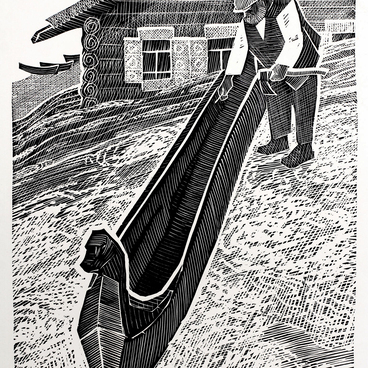The sea has always captivated artists regardless of the era and art movement. One of those attracted by the sea was German Lvovich Ratner, a young artist from Moscow. As a romantic and a dreamer, he began traveling throughout his native country from his student days. His warm Moscow apartment was not as dear to him as the upper reaches of the Mezen and Pechora rivers, Central Asia, the Pamir mountains, and various little-known places.
As German Ratner enjoyed experiencing the subjects of his future artworks firsthand, his travels led him on board a fishing vessel. The artist realized that he could only achieve verisimilitude in his graphic sheets if he experienced all the hardships associated with a fisherman’s life not as an artist or passenger with a lot of time to kill but as a sailor on deck. A fisherman’s work left an indelible impression on the artist, he became inspired by hard work and not by “the romance of the sea life”. The first task that the young sailor was given by the boatswain took into account his background — he had to mix a certain color of paint and paint the cabin. This is how his naval life began. Fishermen understand how little free time sailors have when fishing boats come alongside one after another. German Ratner managed to impress even experienced sailors with his dedication: in his free time, he would make sketches, and at night, armed with a graver, he created linocuts. Within a relatively short period of time, he completed a large series of graphic sheets. Often visiting seaports and observing the work of port workers, he found inspiration for his numerous artworks.
Inspired by the grandiose and monumental port
structures, German Ratner captured his impressions in his work “Dudinka Gantry
Cranes” which is now presented in the exhibition of the Irbit State Museum of
Fine Arts. In this graphic sheet, he depicted gantry cranes in Dudinka,
Russia’s northernmost international seaport. The composition, with its sharp
use of contrast of white and black, combined with rectilinear angular forms,
leaves a strong impression and evokes profound emotional responses. The artist
used a brush, a quill, and ink. The romantic image by German Ratner is not out
of touch with reality — it simply lifts the human spirit above the forces of
nature.


